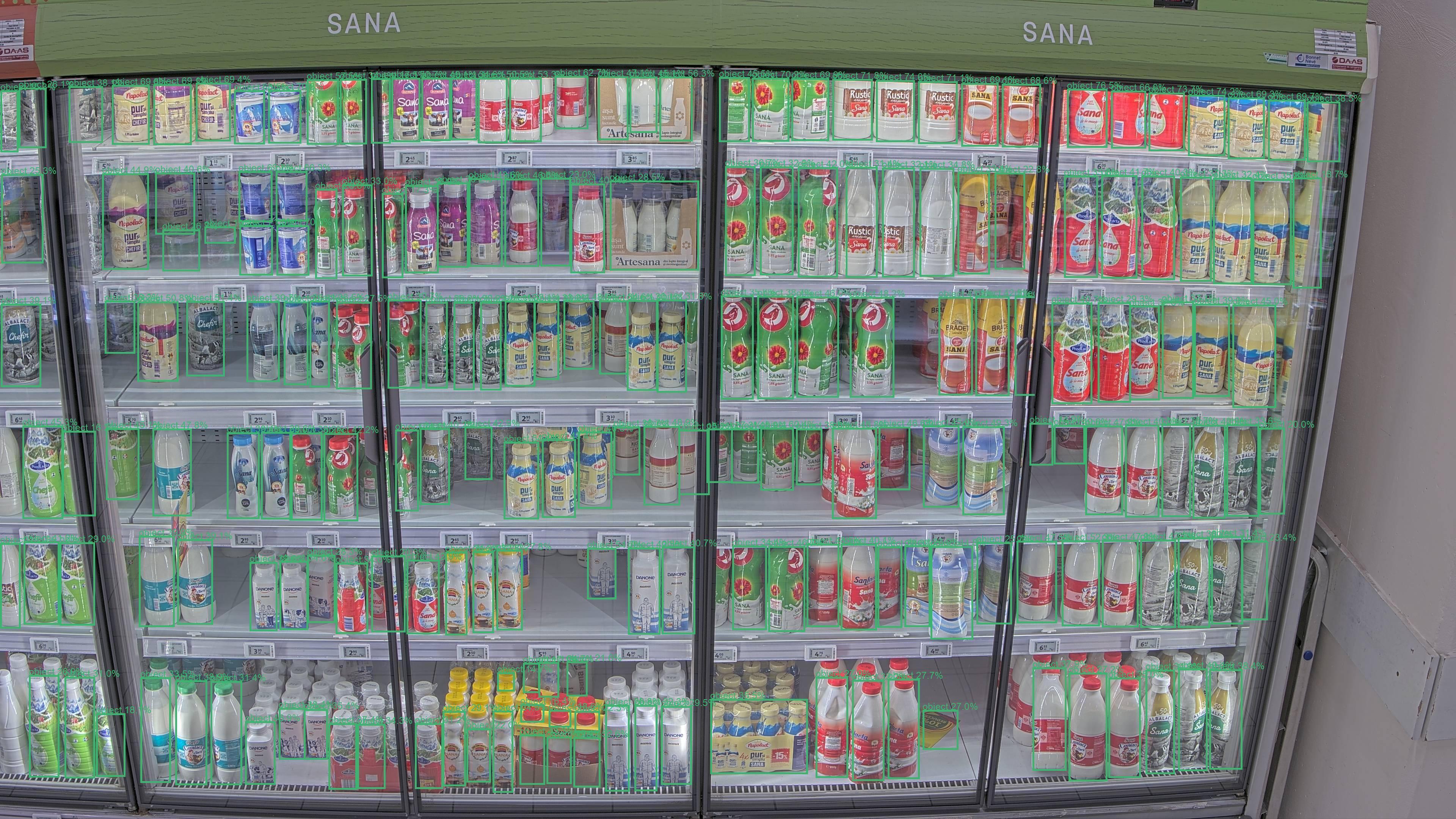📦 Product recognition
The basic operation in ZIA is the identification of products in an image. Once a user has uploaded an image, ZIA automatically localises all Consumer Packaged Goods (CPGs) in the image, with a generic bounding box. Subsequently, each bounding box is assigned a label representing a specific Product. The choice of Products is limited to the user's products selection in their Detection Job.
How it works
Once an image is uploaded, the system will automatically detect and classify all the products in the image. The process works in two steps:
Step 1: Localise the coordinates of all the products in the image

The localiser algorithm has been trained using a variety of Consumer Packaged Goods (CPG) products from different categories placed on various types of shelves.
For some use cases, when we are not interested in specific details about each product, such as the label, and the information obtained in this step is enough.
Step 2: Assign a barcode to all detected products in the image
However, in most cases, it is not enough to know that there is a product present on a shelf, we want to know which product it is. In the second step, the algorithm assigns a specific product barcode to each detected product.
The user can restrict the possible list of products by selecting a limited selection of their Product Catalog, when building their Detection Job.

Getting started
To start using the Product Recognition feature, simply upload an image of a retail shelf to a Detection Job.
👉 Should you wish only to localise products, leave the Items selection empty.
🖖 To benefit from the most optimal algorithm performance, keep your selection of products for the Items page to a minimum, by selecting only the products that are in scope for a particular Detection Job.